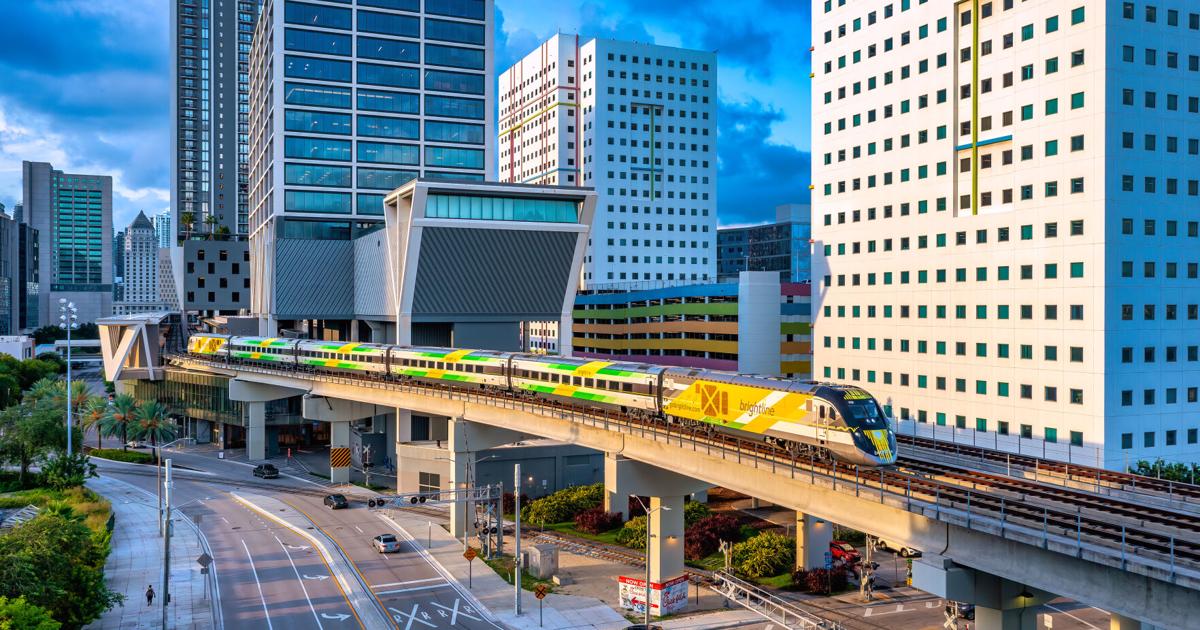Brightline’s high-speed train is creating synergies between Miami to Orlando, the state’s key business centers | Real Estate
During a recent trip to Orlando to tour commercial real estate properties with a client, I took the Brightline high-speed train, a decision that greatly enhanced my journey. In just over three hours, I arrived at the Orlando station located at Orlando International Airport.
Brightline’s service to Orlando began in September 2023 and has significantly enhanced connectivity between Miami and Orlando and transformed the local economies. Brightline has stations in Aventura, Fort Lauderdale, Boca Raton, and West Palm Beach, with a future expansion planned for stations in Cocoa and Tampa.
The travel experience is excellent, with efficient security checks and boarding. Premium-class lounges offer complimentary Wi-Fi, drinks, and snacks. Brightline also provides shuttle services from the station to events like the upcoming Formula One at Hard Rock Stadium.
This public-private partnership benefits local economies by creating synergies between important business centers. Additionally, Brightline’s popularity has spurred interest in real estate around the stations. According to a joint study by the American Public Transportation Association and the National Association of Realtors, properties located near transit stations can increase in value by up to 150%, sparking interest from developers to acquire them.
During my time in Orlando, I was impressed with the growth the city is experiencing across various fronts. The city boasts robust job creation and a diverse, rapidly growing population, thanks to steady in-migration, which drives demand for retail and housing. There are many noteworthy projects in Orlando.
The most notable project in the development pipeline is Orlando’s Sports and Entertainment District, which has received final approval from the city and has been officially renamed Westcourt. This 900,000 sq. ft. development includes a hotel, residences, offices, entertainment, and retail space.
Another notable development is Olympus, a 250-acre development dedicated to sports, health, and wellness. It includes multi-purpose arenas and wellness facilities where Olympic athletes can train. The development will also include resort, hospitality, entertainment, and residential components.
As I toured commercial properties, I drove by communities in the peripheral suburbs of Orlando that are ideal for investors, such as Clermont, Winter Garden, and Lake Nona. According to local real estate expert Natalie Jacoby, communities such as Horizon West, in Disney’s backyard, offer diverse shops and restaurants, health centers, and walkable schools.
How does Orlando compare to Miami in real estate? According to CoStar, a multifamily unit costs 22% less in Orlando ($225,000 vs. $289,000 in Miami), and rents are also 23% lower in Orlando.
On the retail side, demand for retail space in Orlando continues to be high. The region’s fast-expanding population and growing economy continue to drive strong consumer spending. The price of retail properties in Orlando is $275 per square foot, while in Miami, it is $445. Conversely, Orlando rental rates are $28 per sq. ft. compared to $49 per sq. ft. in Miami.
My visit highlighted Orlando’s thriving real estate market and economy. Brightline’s high-speed train has dramatically improved connectivity, benefiting local economies by fostering synergies between Orlando and South Florida.
Fernando Echeverri is a broker specializing in commercial investment properties and works with Great Properties International on Key Biscayne. fe@kbrealtor.com or call (305) 458-6101.





